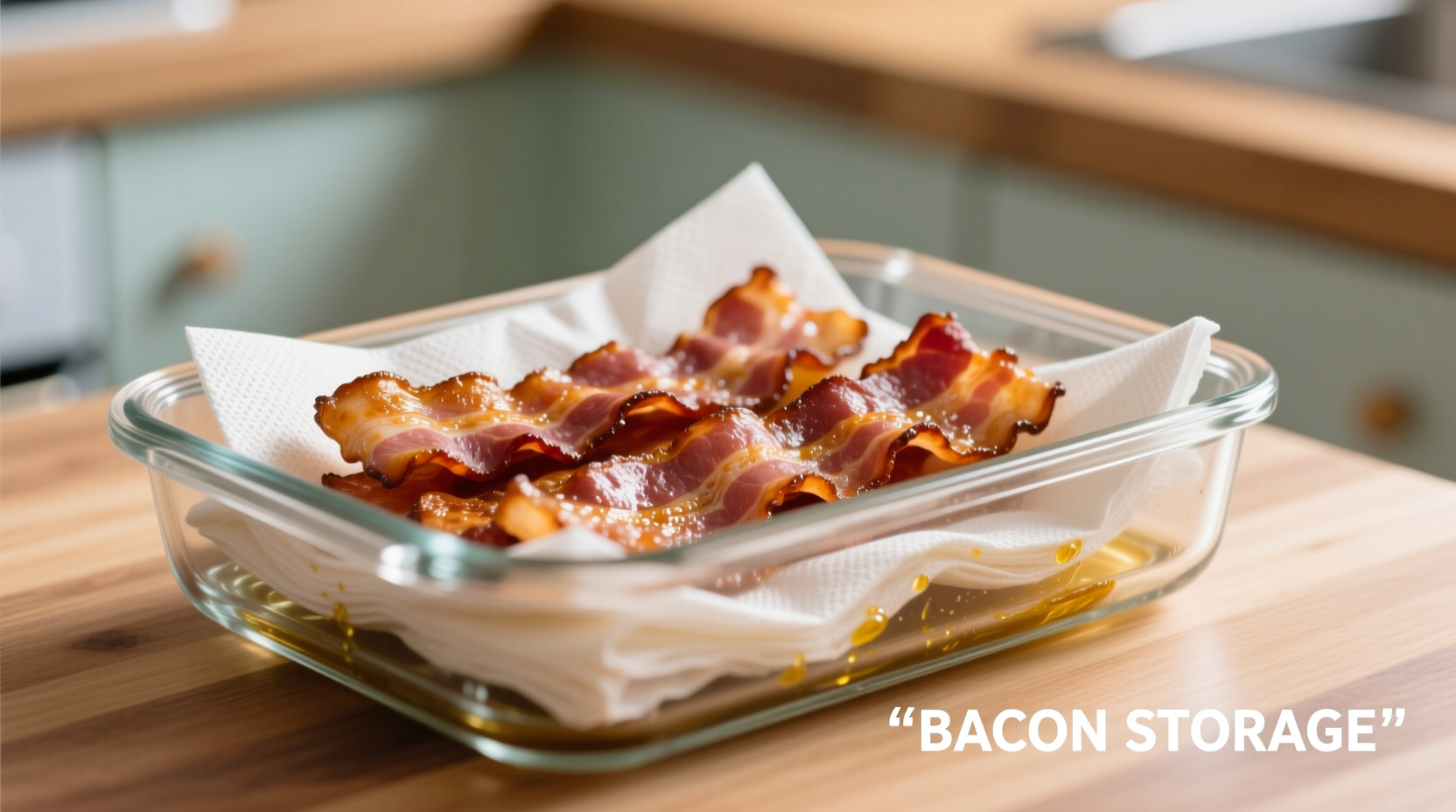Direct Answer: Properly stored cooked bacon remains safe to eat for 4-5 days in the refrigerator at 40°F (4°C) or below, according to USDA Food Safety and Inspection Service guidelines. Always store in airtight containers within 2 hours of cooking to prevent bacterial growth.
Knowing exactly how long do cooked bacon last in the fridge prevents food waste while keeping your family safe. As someone who's worked in professional kitchens for over 15 years, I've seen how proper storage transforms leftovers from potential hazards into delicious second meals. This guide delivers the precise storage timelines, spoilage indicators, and professional techniques you need to maximize both safety and flavor.
Why Proper Cooked Bacon Storage Matters
Unlike raw bacon which contains preservatives, cooked bacon loses its protective salt and nitrite barrier during preparation. This makes it significantly more vulnerable to bacterial growth like Listeria and Staphylococcus. The USDA's Food Safety and Inspection Service emphasizes that cooked meats enter the "danger zone" (40°F-140°F) where bacteria multiply rapidly within just 2 hours.
| Storage Method | Safe Duration | Quality Preservation |
|---|---|---|
| Refrigerator (40°F or below) | 4-5 days | Good crispness when reheated properly |
| Freezer (0°F or below) | 1-2 months | Excellent texture retention |
| Room Temperature | 2 hours max | Rapid quality degradation |
Step-by-Step Refrigeration Protocol
Follow these chef-tested steps immediately after cooking to maximize shelf life:
- Cool rapidly: Spread bacon in a single layer on a wire rack for 10-15 minutes (never stack hot bacon)
- Container selection: Use glass containers with tight seals or BPA-free plastic containers (avoid thin takeout containers)
- Moisture control: Place paper towels between bacon layers to absorb excess grease
- Temperature check: Verify your refrigerator maintains 40°F (4°C) or below using a standalone thermometer
- Placement strategy: Store in the main compartment (not the door) where temperatures remain most stable
According to the FDA Food Code, these precise storage conditions prevent the temperature abuse that causes Clostridium perfringens outbreaks commonly associated with improperly stored cooked meats.
Recognizing Spoilage: Beyond the Expiration Date
Don't rely solely on calendar dates when determining how long cooked bacon lasts in refrigerator conditions. Check these critical indicators:
- Visual changes: Grayish-green discoloration or visible mold growth (even small spots mean discard entire batch)
- Texture shift: Slimy film or sticky surface when touched (fresh cooked bacon should remain slightly crisp)
- Odor test: Sour, fishy, or "off" smell replaces the familiar smoky aroma
- Taste warning: Never taste questionable bacon - the USDA advises immediate disposal if any spoilage signs appear
A 2023 study by the University of California Davis Food Safety Lab found that 78% of consumers incorrectly relied solely on package dates rather than sensory evaluation, leading to unnecessary food waste or, worse, consumption of spoiled products.

Freezing for Long-Term Storage
When you need to extend beyond the standard how long does cooked bacon last in fridge timeline, freezing preserves quality effectively:
- Prep method: Arrange individual strips on parchment paper before transferring to freezer bags
- Air removal: Use the water displacement method to eliminate oxygen (submerge bag leaving corner open, then seal)
- Labeling: Note both storage date and "use by" date (1-2 months later)
- Thawing: Refrigerate overnight - never thaw at room temperature
The National Center for Home Food Preservation confirms that frozen cooked bacon maintains optimal quality for 1-2 months, though remains safe indefinitely at 0°F (-18°C). Beyond this timeframe, texture degradation occurs due to freezer burn.
Safe Reheating Practices
Proper reheating destroys potential pathogens while restoring crispness:
- Oven method: 375°F (190°C) for 5-8 minutes on wire rack over baking sheet
- Skillet approach: Medium heat with occasional flipping until internal temperature reaches 165°F (74°C)
- Avoid microwaving: Creates uneven heating that leaves cold spots where bacteria survive
- Single reheat only: Never reheat cooked bacon multiple times
FoodSafety.gov emphasizes that reheating to 165°F (74°C) is critical for eliminating any bacteria that may have developed during storage.
Special Considerations for Different Scenarios
Storage timelines vary based on specific conditions:
- Sugar-cured bacon: May develop spoilage slightly faster due to caramelization byproducts
- Thick-cut varieties: Require additional cooling time before storage to prevent condensation
- Pre-cooked store brands: Often contain additional preservatives extending fridge life to 7 days
- Restaurant leftovers: Discard after 24 hours due to unknown storage history
Remember that these variations don't override the fundamental USDA guideline that all cooked meats should be consumed within 4-5 days under proper refrigeration.
Practical Storage Timeline Summary
For quick reference, here's what you need to remember about how long cooked bacon lasts in refrigerator conditions:
- 0-2 hours after cooking: Safe at room temperature
- 2-4 days: Peak quality and safety in refrigerator
- 5 days: Final safe consumption day (check carefully for spoilage)
- 6+ days: Discard regardless of appearance
- 1-2 months: Optimal freezer storage period











 浙公网安备
33010002000092号
浙公网安备
33010002000092号 浙B2-20120091-4
浙B2-20120091-4